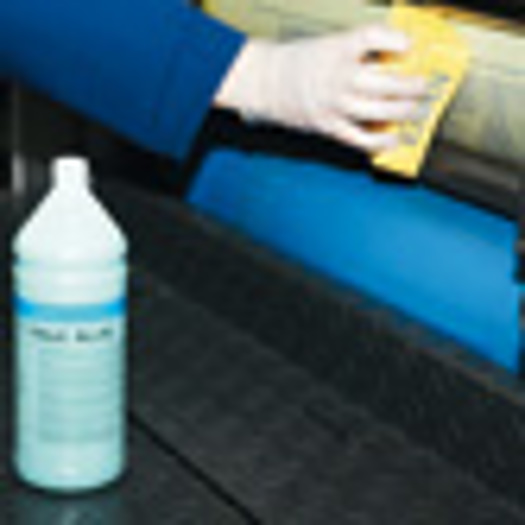The EU solvents directive, which came into effect in 1999, and a desire to be seen as environmentally responsible have driven the market towards the reduction of isopropyl alcohol (IPA), says Paul Owens, sales manager and UK pressroom chemicals technical coordinator at Flint Group.
There are extra expenses that can arise if you don’t address alcohol use and VOCs, both direct and indirect, such as higher insurance costs, adds Joe Christopher, UK technical services manager for pressroom products at Fujifilm Graphic Systems.
Sugar coated
Anti set-off powders form a barrier between sheets of paper as they leave the press and prevent ink from marking the sheet above. Most of these powders are usually derived from food starch or sugars.
Sugars produce the type of powders that disappear and starches can be coated to produce better dispersement properties. Soluble and coated powders are more expensive, but you use less, resulting in less waste, says Fuji’s Christopher.
Fount solutions cut the time it takes for the press to get up to colour by altering the water’s chemical formulation and making the water ‘wetter’. With IPA-free printing it’s important to ensure that the wetting agent is not destructive.
All too often it can be an aggressive glycol that can adversely swell rubber components and pan rollers in the dampening system, explains Stephen Hannon, managing director at Böttcher UK.
As a result, once you’ve switched to reduced-alcohol systems, it’s important to monitor press performance. Investment in extra filtration can result in cost savings due to increased tank life, says Claire Ashby, technical sales and support manager for Heidelberg’s consumables division. This is because alcohol has a passive cleaning effect, hence the need for extra filtration.
Ashby continues: Water quality and consistency is also important and it’s usually recommended that an RO unit is used and the water is re-hardened to a suitable level.
When choosing an alcohol-free fount buyers need a good knowledge of rollers, the compound and the settings on the press in order to implement it effectively.
The printers will need to learn how the ink and fount interactions have changed with the elimination of alcohol and any associated changes required to the press settings, says Ashby.
What’s new in pressroom consumables
- Heidelberg introduced a fount solution, Saphira Eco Fount in the last quarter of 2009. It claims to be able to reduce damp levels, increase tank life and show improvements in print quality and ink performance
- In September, Ultrachem took its range of UV inks, water-based coatings and pressroom chemistry to Print 09 in Chicago. It was the first time that the UK supplier of pre-press and pressroom consumables has exhibited at the show. The company is actively targeting the US market and has also secured four distributors in South America
- Ray Hamilton, the founder of Hydro Dynamic Products (HDP), died in September last year. Hamilton established HDP in Shoreham, Sussex, in the early 1970s and the company grew to become a major consumables supplier to the industry









